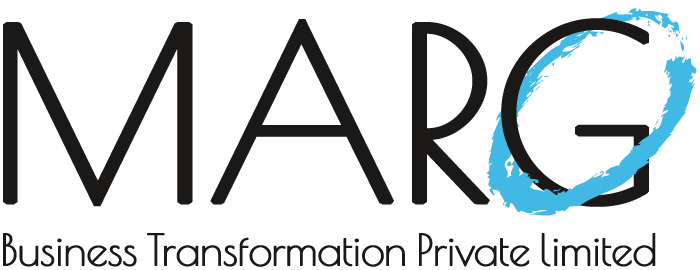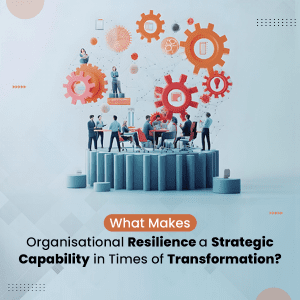
Staying ahead of the competition in today’s transforming business environment necessitates an organised approach to employee development. Organisations increasingly recognise the importance of leadership development programmes to address skill gaps, enhance resilience, and secure lasting success. These programmes empower CXOs to groom leaders, align teams with organisational goals, and foster adaptability amid market disruptions.
The requirement for effective leadership pipelines has never been greater. CXOs play a pivotal role in leveraging corporate leadership training programmes, ensuring their teams remain agile and well-prepared for tomorrow’s challenges.
The Importance of Leadership Development Programmes
Leadership development programmes are structured initiatives designed to nurture and enhance leadership capabilities at all organisational levels. These programmes go beyond filling immediate vacancies, focusing on building a steady pipeline of competent leaders who can drive innovation and growth.
Key Benefits of Leadership Development Programmes:
- Fostering a Culture of Growth: A commitment to leadership development signals an organisation’s dedication to employee growth and career progression. This culture attracts top talent and boosts retention.
- Proactive Talent Management: Rather than reacting to skill gaps, leadership programmes enable organisations to cultivate internal talent, reducing reliance on external hiring.
- Enhanced Operational Agility: Skilled leaders are better equipped to navigate uncertainty, ensuring smooth transitions during market disruptions or organisational changes.
For CXOs, these benefits are critical to sustaining competitive advantage and ensuring long-term success. By championing leadership development programs for companies, they prepare their organizations to thrive in a volatile landscape.
Building a Strong Leadership Pipeline
One of the first steps in creating a leadership pipeline is identifying high-potential employees (HiPos). These individuals demonstrate not just performance excellence but also the aptitude to take on larger responsibilities.
Traits of High-Potential Employees:
- Future Potential: HiPos demonstrate leadership skills that can navigate larger challenges and lead effectively.
- Capacity for Strategic Thinking: HiPos have a vision beyond their current responsibilities and can align their actions with larger organisational goals.
- Emotional Intelligence and Relationship Building: HiPos are skilled in managing relationships and influencing others, essential for future leaders.
- Commitment to Self-Development: HiPos consistently shows a desire for self-improvement and development, seeking feedback and taking initiative.
- The breadth of Experience: HiPos bring a holistic understanding of the business, essential for navigating complex challenges.
- Ability to Influence: HiPos can inspire and influence others, earning trust and respect from peers.
Once identified, nurturing HiPos involves providing tailored development opportunities, including assignments, mentorship and participation in corporate training programmes in India. These initiatives enable them to build the skills and confidence needed for leadership roles.
Building a strong leadership pipeline goes beyond merely identifying top performers; it requires a comprehensive approach to talent development. CXOs understand that creating such a pipeline involves more than identifying high performers – it’s about equipping individuals with the right skills, mindset and support to excel in leadership roles.
How Leadership Pipelines Drive Organisational Success:
- Cost-Efficient Leadership Transitions: Internal leaders are already familiar with the company’s values and goals, reducing onboarding time and ensuring continuity.
- Resilience During Market Shifts: A prepared leadership pool enables quick adaptation to industry disruptions, positioning the organisation as a proactive market leader.
- Alignment with Strategic Goals: Leadership programmes ensure that emerging leaders are aligned with the organisation’s evolving objectives, from digital transformation to global expansion.
By integrating leadership development programs for companies into their talent strategies, CXOs not only address immediate challenges but also secure a sustainable growth trajectory.
The Role of Corporate Training in Leadership Development
Corporate training programmes in India have emerged as vital tools for developing leadership capabilities. Companies that implement effective leadership development programmes experience 19% higher profitability, reflecting the increasing emphasis on upskilling and leadership development. These programmes combine global best practices with local insights, ensuring relevance and impact.
Key Features of Corporate Training Programmes:
- Customisation: Tailored content addresses specific organisational challenges and goals.
- Practical Learning: Case studies, simulations and real-world scenarios bridge the gap between theory and practice.
- Scalability: Programmes are designed to cater to organisations of all sizes, from startups to large enterprises.
For CXOs, leveraging these programmes is a strategic move to equip their teams with the skills needed to lead effectively in an ever-changing environment.
The Future of Leadership Development
As organisations navigate digital transformation, hybrid work cultures, and global expansion, leadership development programs for companies must evolve too. The future will focus on:
- Digital Leadership Skills: Preparing leaders to harness AI, data, and digital tools for decision-making.
- Inclusive Leadership: Building diverse teams and ensuring equitable opportunities for all employees.
- Agility and Adaptability: Leaders who can pivot quickly during disruptions will drive resilience.
- Sustainability and Ethics: Equipping leaders to champion responsible business practices.
Forward-looking organizations will invest in leadership development strategies that not only prepare for today but also anticipate the skills required for tomorrow.
From Training to Impact: Leadership Development in Action
Several organisations have successfully used corporate leadership training programmes to create agile leaders. For instance, companies that partnered with MARG Business Transformation for customised training solutions saw a marked improvement in leadership readiness, team cohesion and operational efficiency. By integrating programmes like PROSCI’s change management and EMERGENETICS’ employee profiling, organisations fostered a culture of collaboration and innovation.
Partner with MARG to Build Future-Ready Leaders
By aligning leadership training with organizational goals and leveraging tailored corporate training programmes, CXOs can build resilient, adaptable and high-performing teams. At MARG Business Transformation, CXOs embrace these programmes to lay the foundation for sustained growth and success, ensuring their organisations are equipped to meet the challenges of tomorrow.
Ready to invest in your leadership pipeline? Connect with MARG today to discover how our leadership development programs for companies can help you create the leaders of tomorrow.
FAQs
- What are leadership development programs for companies?
These are structured initiatives designed to build leadership skills, prepare future leaders, and align employees withorganisational goals. Leadership development programs for companies help businesses stay competitive and agile. - Why should CXOs invest in leadership development programs for companies?
CXOs who championleadership development programs for companies ensure stronger leadership pipelines, better decision-making, and long-term organisational resilience. - How do leadership development programsbenefitemployees?
They offer growth opportunities, enhance career progression, improve emotional intelligence, and provide the confidence to take on higher responsibilities. - Can leadership development programs for companies improve retention?
Yes. Whenorganisations invest in employee growth through structured leadership programmes, it creates loyalty and engagement, reducing turnover and strengthening workplace culture.






